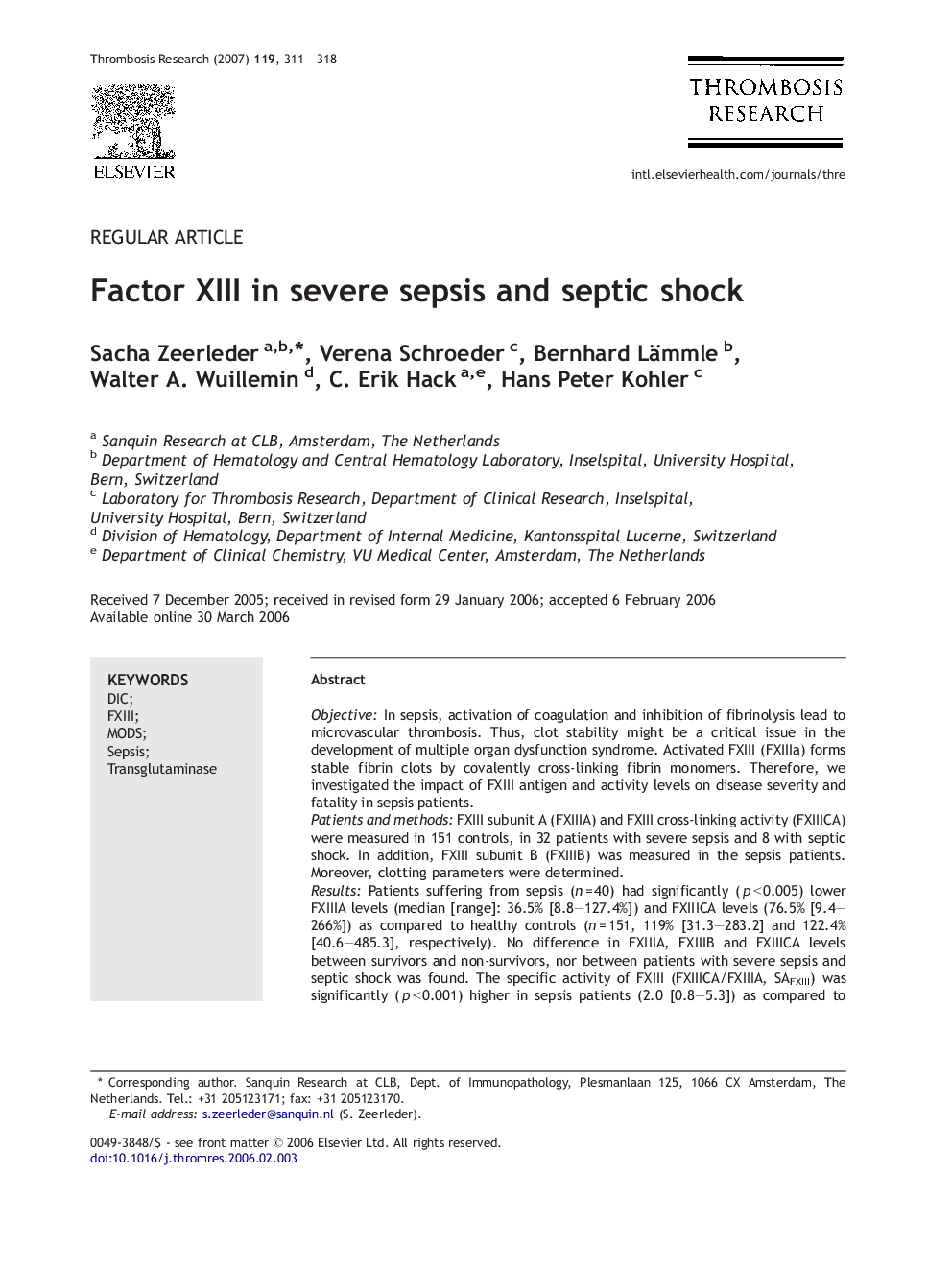| کد مقاله | کد نشریه | سال انتشار | مقاله انگلیسی | نسخه تمام متن |
|---|---|---|---|---|
| 3030191 | 1183175 | 2007 | 8 صفحه PDF | دانلود رایگان |

ObjectiveIn sepsis, activation of coagulation and inhibition of fibrinolysis lead to microvascular thrombosis. Thus, clot stability might be a critical issue in the development of multiple organ dysfunction syndrome. Activated FXIII (FXIIIa) forms stable fibrin clots by covalently cross-linking fibrin monomers. Therefore, we investigated the impact of FXIII antigen and activity levels on disease severity and fatality in sepsis patients.Patients and methodsFXIII subunit A (FXIIIA) and FXIII cross-linking activity (FXIIICA) were measured in 151 controls, in 32 patients with severe sepsis and 8 with septic shock. In addition, FXIII subunit B (FXIIIB) was measured in the sepsis patients. Moreover, clotting parameters were determined.ResultsPatients suffering from sepsis (n = 40) had significantly (p < 0.005) lower FXIIIA levels (median [range]: 36.5% [8.8–127.4%]) and FXIIICA levels (76.5% [9.4–266%]) as compared to healthy controls (n = 151, 119% [31.3–283.2] and 122.4% [40.6–485.3], respectively). No difference in FXIIIA, FXIIIB and FXIIICA levels between survivors and non-survivors, nor between patients with severe sepsis and septic shock was found. The specific activity of FXIII (FXIIICA/FXIIIA, SAFXIII) was significantly (p < 0.001) higher in sepsis patients (2.0 [0.8–5.3]) as compared to healthy controls (1.0 [0.4–5.1]). SAFXIII significantly (p < 0.05) increased with fatality (non-survivors [n = 13] vs. survivors [n = 27]: 3.3 [1.2–5.0] vs. 1.9 [0.8–5.3]) and disease severity (septic shock vs. severe sepsis: 3.4 [1.8–4.3] vs. 1.9 [0.8–5.3]).ConclusionWe show decreased FXIIICA and FXIIIA levels, but higher SAFXIII in sepsis as compared to controls. Increased SAFXIII correlates with disease severity and fatality in sepsis patients.
Journal: Thrombosis Research - Volume 119, Issue 3, 2007, Pages 311–318